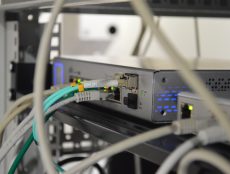
Articles
K-12
Schools Are Building Permanent Remote Learning Capabilities, Even as Vaccines Roll Out
By Henry Kronk
February 18, 2021
The Bozeman School District in Montana is worried about losing learners to private charter schools. The Kingsway Regional School District in New Jersey has recognized how certain students are thriving during hybrid learning. And educators at the Eden Prairie School District in Minnesota say they want to capitalize on the pedagogies they have developed over the past year. For a variety of reasons, public primary and secondary schools around the country are developing long-term, permanent remote learning capabilities to offer their learners going forward.
While districts across the U.S. are leaning on remote learning due to severe winter storms, some are looking further into the future. Many see other virtues in ongoing and permanent remote learning besides disaster response.
For a Variety of Reasons, Schools Are Planning to Offer Permanent Remote Learning Going Forward
In Bozeman, Montana, educators plan to launch district-connected virtual schools for K-8 and high school. As Co-Superintendent Casey Bertram told the Bozeman Daily Chronicle, “If we don’t provide more flexible options, we’re a bit worried a private charter (school) would.”
This Fall, @dallasschools will offer a new school where hybrid learning (in person/remote) will be part of the permanent daily schedule for 4th-6th grade students https://t.co/78J4rrGdi5
— Sean Gill (@seanrobertgill) February 12, 2021
The district stood up the Bozeman Online School for full-time instruction for grades K-8 beginning last August. It has begun the early stages of transforming that into what would become the Bozeman Online Charter School. The district is currently seeking input from community members to assess interest.
Interest and enrollment at virtual charter schools surged this summer. Many expect that interest to remain after the risks posed by the coronavirus pandemic subside.
Some Students Thrive in Online or Hybrid Environments
Meanwhile, the Kingsway Regional School District in New Jersey has identified another reason to maintain permanent online learning. Some students are performing better academically.
“We have students who are really thriving in this environment,” said Superintendent Jim Lavender, according to NJ.com. “This virtual instruction is not going to go away and it will certainly have an impact on teaching and learning in the future and we’re positioning our district to capitalize on it.”
This phenomenon has so far been related anecdotally. It has also been projected by researchers. In a working paper published last May, researchers who track K-12 student performance projected that, on average, students would only realize roughly two thirds of the learning gains they would see on a given year in reading and just 37% to 50% of gains in math. In the same paper, the team led by NWEA (a non-profit that creates the widely used MAP student assessments) researcher Megan Kuhfeld wrote that the top third of students might make potential gains in reading.
Evidence has yet to confirm this reality in detail. This fall, NWEA published preliminary findings from the tests students had taken during COVID-19 in math and reading for grades 3-8. The median scores in reading were largely unchanged from previous years, but math scores were five to ten percentile points lower than the previous year.
Those median scores do hide the fact that many communities of learners are falling further behind than others. The data is also very preliminary.
On the ground, however, districts like Kingsway in New Jersey are seeing enough evidence of this fact to make online and hybrid learning a possibility into the future. The program being developed by the school will only be available to top performers. Learners who do maintain a hybrid or online schedule will have to also keep their grades above a certain level. The program will be made available to roughly 100 seniors and juniors of Kingsway Regional High School’s 800 total students.
A Range of Factors
In Minnesota, all of these reasons and more are at work behind the push from dozens of schools to build out their permanent remote learning capabilities and develop district virtual charter schools.
According to the Minnesota-based Star Tribune, there are currently 38 online primary and secondary programs authorized by the state. Jeff Plaman, the state’s Department of Education digital learning specialist, says it’s typical to get four applications a year to launch a new online program. But the department is currently reviewing 15 and expects to receive 25 more in the near term.
Some see this as a way to make high quality instruction available to a larger population of students.
As Raymond Diaz, the online program director at Eden Prairie Schools, told the Star Tribune, “Our goal is to give an opportunity for every student in the state of Minnesota to experience Eden Prairie schools and our amazing teachers and to inspire those students as well.”
Featured Image: Kelly Sikkema, Unsplash.









No Comments